Update: If you like Midjourney, but don’t like the price tag, check out this article: 5 best free alternatives to Midjourney for writers who need marketing or cover images. Also, if you want a little bit more space around the main elements in your image, for, say, the book title or author name, you can now zoom out. Check out my tutorial on the new zoom out function here.
Last night, I recorded a video with MetaStellar community members, artists and interview show hosts Andrea Goyan and E.E. King — both of whom are also speculative fiction writers. We talked about how to generate images with the Midjourney app. Midjourney is one of several new tools where AI generates images for you. You can read my review of Midjourney here. And you can see examples of 28 covers I made with Midjourney and Canva here.
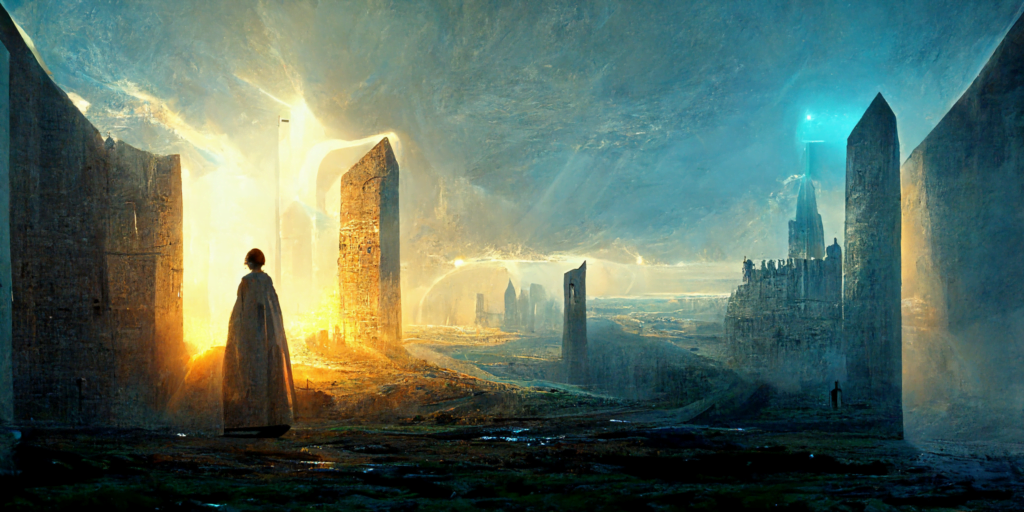
The first 25 images are free, which is enough to get a taste of the tool. But to really make use of it, you should sign up for the $30 per month plan and switch to “relax” mode. This will give you an unlimited number of images — and, trust me, you’ll need them. Once you start playing with this thing, it’s almost impossible to stop.
Just go to the Midjourney website, go through the sign-up process, then log into the Midjourney Discord server. They’ll send you all the instructions, though they’re ridiculously unclear. It took me an hour to figure out how to use it — and I’ve used Discord before. So expect to spend a little time here. I admit, the Midjourney interface is the worst of all the AI image generator apps I’ve reviewed this year. You might want to watch my video from last night where I spent an hour explaining how to use it.
Anyway, one of the things we talked about was whether Midjourney can be used to create book covers.
So, first, you want to have the paid version of the tool, because then your images are private. Otherwise, anyone can see them and use them. Of course, if you don’t care if other people can use your images, then this might not be an issue. So, for example, if you use Midjourney to generate images for short story covers you might not be too concerned. Or if you’re using Midjourney to replace stock images you’ve been pulling down off Pixabay or another stock image site — then you’re already comfortable with the fact that the same image might show up elsewhere.
Create your Midjourney image
So, first, obviously, you need to create an image for your cover.
I recommend looking at other books in your genre to get a sense of what kind of covers are popular. But, for the sake of this experiment, I’m going to create a cover with a fantasy castle illustration.
And I want the image to be vertical. For a book cover, the recommended size is 1600 pixels wide by 2400 pixels high, which works out to an aspect ratio of 2 to 3. You remember how to reduce fractions, don’t you? You find the biggest common denominator… Anyway, I digress.
Go to the Midjourney Discord server, click on the “Midjourney Bot” in the left-hand panel if you’re a paid customer or one of the “newbie” channels if you’re still on the free plan, then type the following text into the text entry field at the bottom of the screen:
/imagine fantasy castle illustration –ar 2:3
You have to be very careful with the formatting — you really need that slash before the word “imagine” and the two dashes with no space after them before the “ar.” That last bit, the “–ar 2:3” is what will make the image the right size for a book cover, instead of square.
If you notice, in the screen shot above, there’s the word “prompt” in gray between “/imagine” and “fantasy castle illustration –ar 2:3”. I didn’t type that — Midjourney automatically puts that there after you hit the space bar after typing “/imagine”.
Then you wait a couple of minutes. I’m in the “relax” mode — to get unlimited images for my $30 — so it’s supposed to be a little bit slower than it would be otherwise. But frankly, I haven’t noticed a difference.
Eventually, you get four images. Now you have a choice — you can re-run the same prompt by hitting the rerun button — it’s the two arrows in a circle. Or you can upscale one of the four images you’ve created by hitting the “U1,” “U2,” “U3” or “U4” button. Or you can ask Midjourney to do some variations on one of the four images by hitting the “V1,” “V2,” “V3,” or “V4” button.
The Midjourney AI doesn’t have enough common sense — yet — to know that you don’t usually have two castles on top of each other. You might have to rerun the same prompt a few times before you get an image you like.
Or you can fiddle with the prompt a little bit. For example, you might add the word “steampunk” to the prompt.
/imagine fantasy castle steampunk illustration –ar 2:3
Here are the results:
Or you can add the phrase “studio ghibli” or “pixar” or “trending on artstation.” You can also try “photorealistic” or “dramatic backlighting” or “moonlit night.”
I’m going to throw them all in and see what happens:
/imagine fantasy castle steampunk illustration studio ghibli trending on artstation dramatic backlighting moonlit night –ar 2:3
Here are the results:
I like that one at the bottom right. I figure I can crop out the weird clouds at the bottom, and the nice solid blue sky above will make it easy for me to add empty space for text.
So I hit “U4” to upscale the fourth image and this is what I get:
Now, this is the part where a professional artist would open up Photoshop or a similar program, but for the purposes of this exercise, I’m going to go to Canva. It’s free, it makes it easy to collaborate with friends, and it’s the platform I recommend to everyone because it has virtually no learning curve.
After you create your account and log in, there’s a button near the top right of the home page that says “custom size.” Click that, and enter 1600 for width and 2400 for height.
On the far left, you’ll see a vertical panel with icons labeled “Templates,” “Elements,” “Uploads,” “Text” and “Styles.” Click on Uploads and upload the image you’ve just saved from Midjourney.
Then, once it’s uploaded, click it and it will pop up in the center, in the main window.
Now you can fiddle around with it.
First, I’m going to click on the white background and change its color to match the color of the castle image. Then I’ll stretch the castle image to take the full page, and move it down, to get rid of the weird clouds.
And I’m going to add a shadow panel to the top and to the bottom to make things a little bit darker there. Click on the “Elements” icon at the far left and type “transparent gradient black” into the search box. As I write this today, the second option is free — the others have little gold crowns on them indicating that Canva wants you to pay extra. But the free gradient is perfectly fine for my purposes. If I was in Photoshop — or Gimp, my preferred open source alternative — I’d just do a gradient fill here.
Then I click the “Text” icon at the far left and add a title and author name and play around with fonts and line spacing, then increased the contrast and saturation a bit on the main image.
And voila:
You can click on the image above to get the full-sized version, so you can see how it would look on a print cover.
Would I put this on a real book? No, I’d spend a few more hours playing around with Midjourney to get a better image. And I’d spend another couple of hours trying out different fonts. Then I’d get frustrated, give up, and hire an artist.
But frankly, it already looks better than most hand-made covers out there, so I’d be totally happy putting it on a short story.
Which reminds me. I’m actually working on a short story now. About an angry woman who’s killing people in a medieval-themed virtual world.
Here’s my prompt:
/imagine angry short-haired beautiful woman in armor holding a sword and knife video game style highly detailed epic dramatic backlighting standing bravely in front of a portal –ar 2:3
Here are the results:
I liked the one on the bottom left, upscaled it, and dropped it into Canva without any touching up or any shadows — no additional work at all. Just added some text.
Not bad for five minutes’ work.
If you had trouble following any of the above instructions, what the video below, where I create a brand-new, completely original book cover in ten minutes:

MetaStellar editor and publisher Maria Korolov is a science fiction novelist, writing stories set in a future virtual world. And, during the day, she is an award-winning freelance technology journalist who covers artificial intelligence, cybersecurity and enterprise virtual reality. See her Amazon author page here and follow her on Twitter, Facebook, or LinkedIn, and check out her latest videos on the Maria Korolov YouTube channel. Email her at maria@metastellar.com. She is also the editor and publisher of Hypergrid Business, one of the top global sites covering virtual reality.

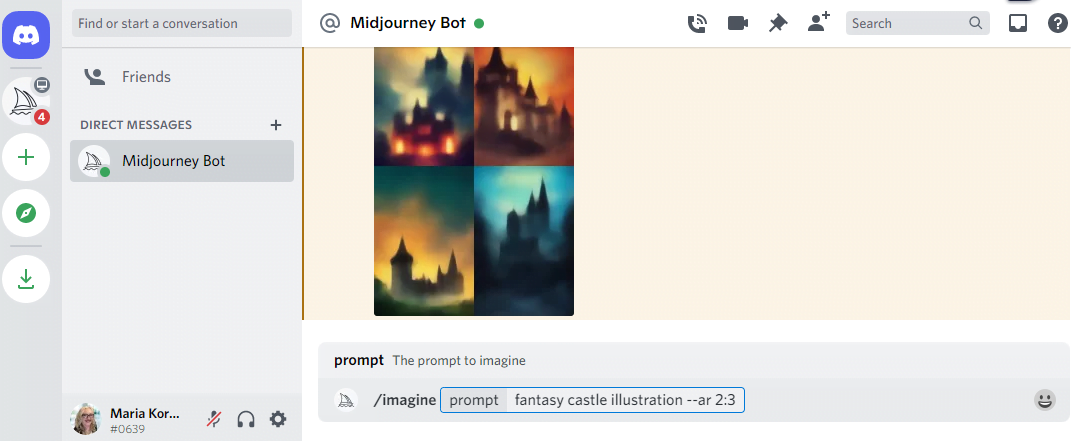
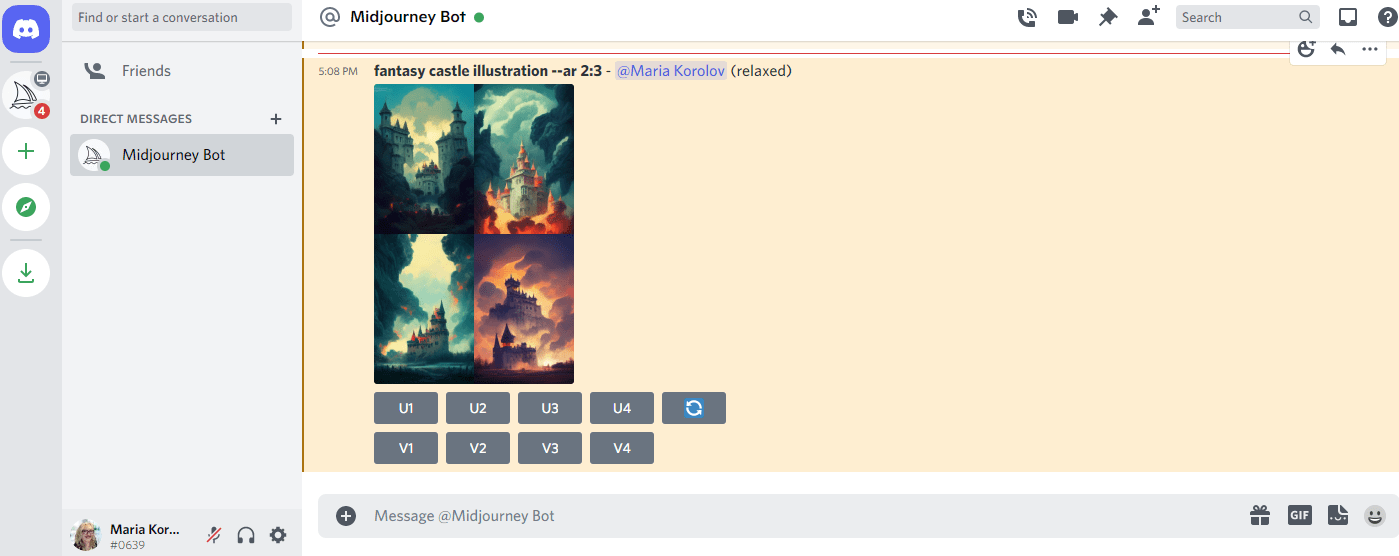
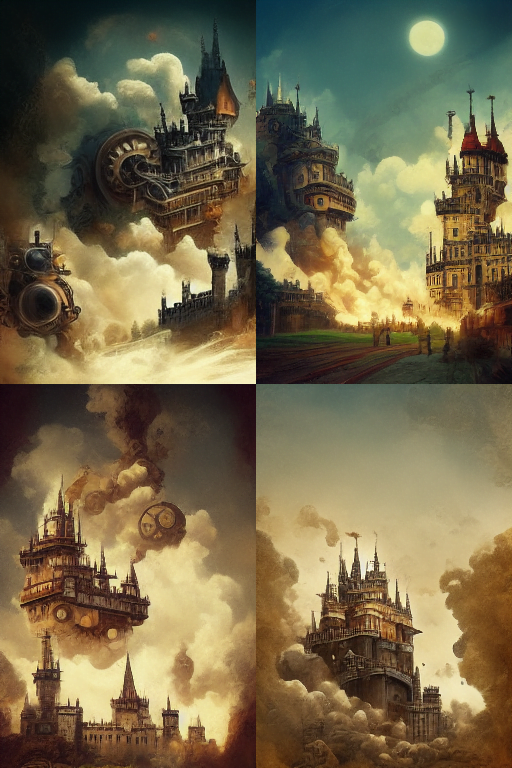
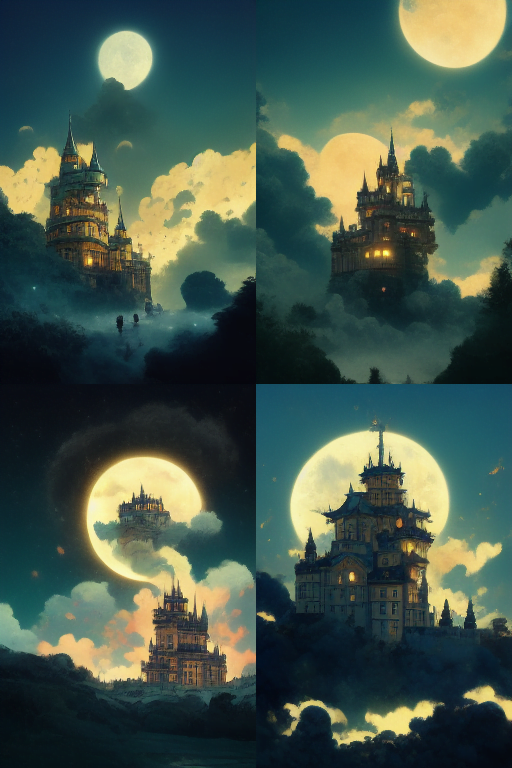
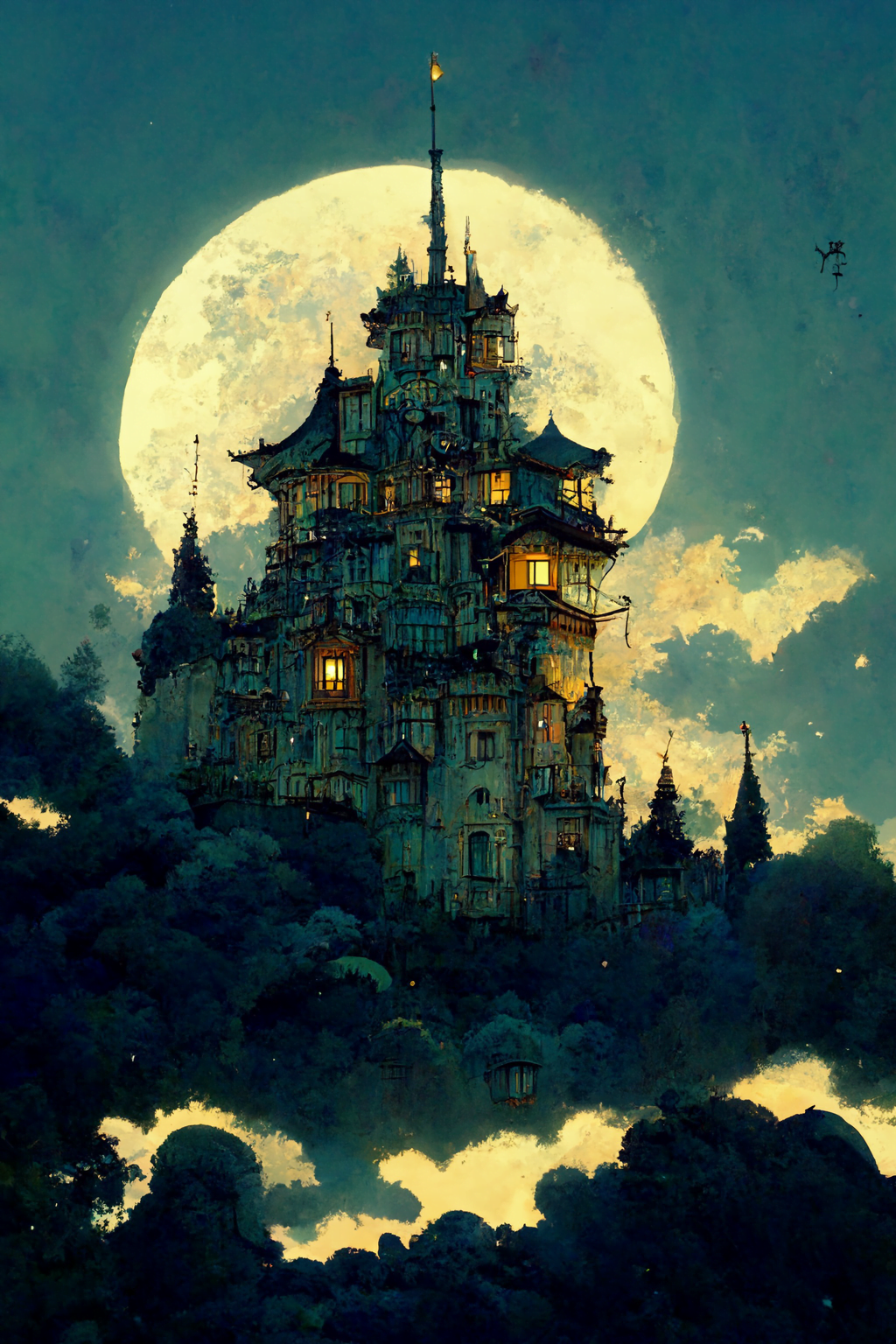
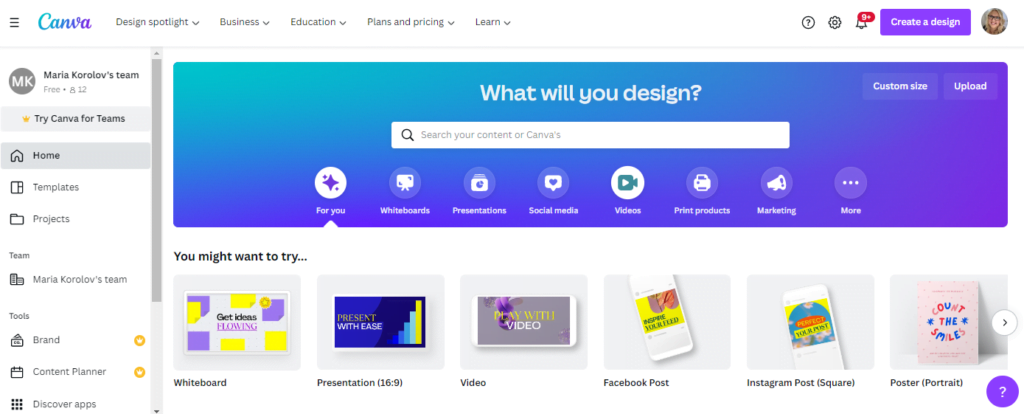
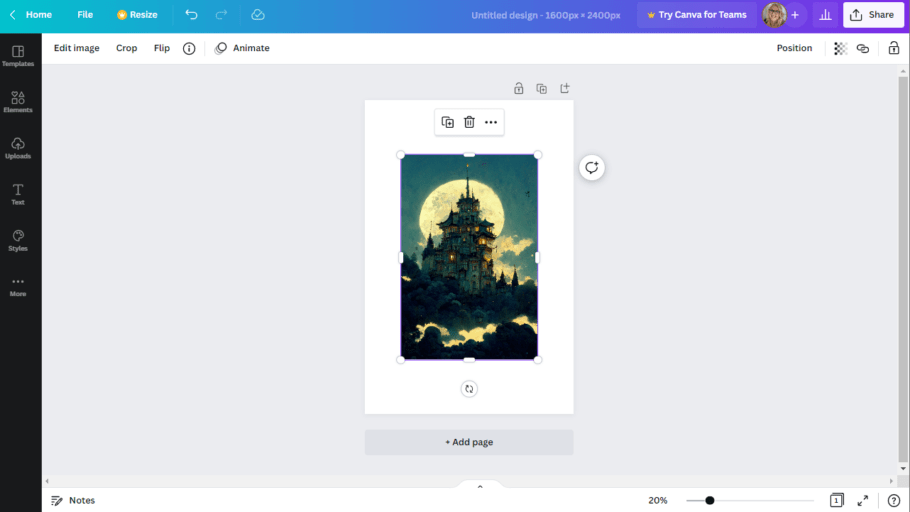
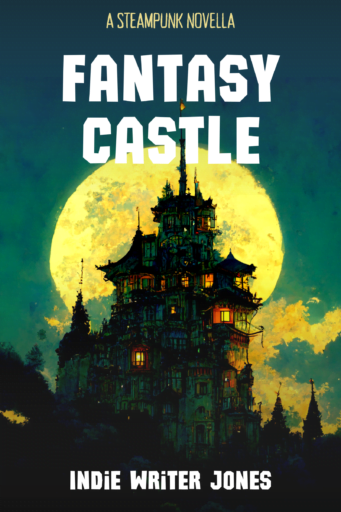
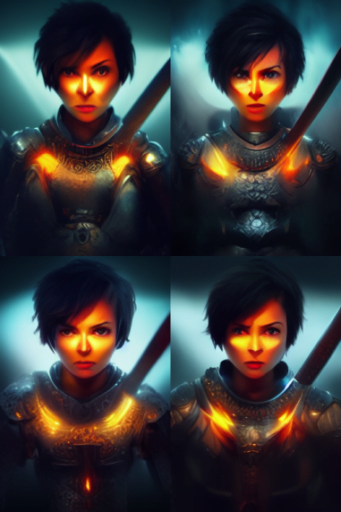
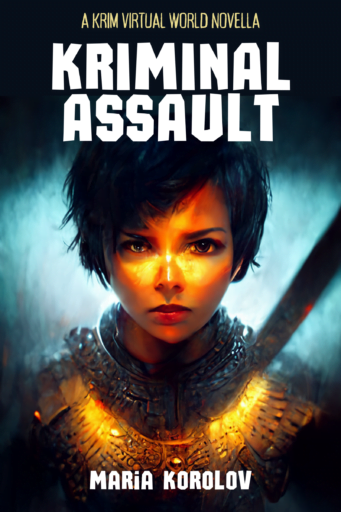

Great way to decimate the creative industry with images made in 5 minutes, scrapped from other people’s work.
Not sure you would like an Ai writing books, put together in 5 min by joe bloggs using a book publishing generator.
So, how will your statement change when I tell you there have been AI programs for this already? Plot generators are simplistic forms of it. However, there are programs that put together entire news stories and blog posts. Even product descriptions. They existed long before AI for art.
Not to mention, as someone who has reluctantly played with a few AI programs for art (long story) they fall far short of the quality you get from hiring an artist.
1. It’s hit or miss and takes a lot of work to get something you might want. (Example, it doesn’t know how to generate a mouse chasing a cat.)
2. There are flaws. Sometimes minor, often major. (Example, A man holding a longbow more often than naught produces a weird cross between a longbow and a crossbow. Joints going in the wrong direction, and in one fun instance, he was holding a deer’s antler instead!
3. It is a good tool to generate some ideas for your own artistic designs. Plugging in prompts and seeing the results, liking aspects of one, and aspects of another, then drawing your own image with those desired aspects. (Many artists I know will use references when they draw. AI can be used for the same reason.
Any piece I’ve seen that I like, still ends up needing touching up, which means I still have need to contact my favorite artist to touch it up (i.e., I still pay for full work). They’ve gotten more work out of me because of the AI art. Though I am probably an acceptation. If someone is willing to accept ‘good enough’, the artist can’t do much about it, nor is it the program’s fault. Most people who use the AI generators are generally too cheap to buy art in the first place.
By all means if you feel the need to boycott an individual or a company because they use generated AI, do so. (It can work if you get enough people who feel the same to boycott!) But I don’t see people like you boycotting industrial businesses that put tailors and shoemakers out. Blacksmiths, Goldsmiths, and Silversmiths were also victims of technology.
Basically;
I do not see AI art replacing artists anymore, unless the population decides it is okay with sub-par results most of the time. An artist is still going to be required to touch up the art.
M —
First, the genie is out of the bottle.
I agree — the first round of AIs is trained on copyrighted images. This isn’t against the law — it’s not against the law for human artists to train by copying other artists’ work, either. In fact, that’s how humans normally learn. As long as the result is unique and original, that’s what counts.
But it’s potentially problematic enough that Getty has just prohibited AI-generated images from their collection.
The next round of AIs will be trained on curated, non-copyrighted images, just to address those concerns.
But that doesn’t address the main point of your comment — that the new technology will decimate the art industry.
It will. Artists and writers need to start preparing. In fact, artists should have been preparing a few years ago, when the writing was first on the horizon.
AIs won’t take all art and writing jobs, just like industrialization didn’t kill all family farms and home-based seamstresses. We still have both, but there are far fewer of those jobs than there were before, and the people who do have those kinds of businesses had to stop competing against mass-production head-on. Quality and consistency and reliability will no longer be the selling points. AI can make high quality products (up to a certain level), much more consistently, and, of course, much faster.
If your art — or your writing — is messy, inconsistent, and slow, well, you can rejoice, because you now no longer have to worry about fixing those things. Just like human pottery makers no longer strive to be perfect and fast — it’s the imperfections, and the time they take, that are some of the selling points.
What you do have to worry about is marketing and brand building. People will pay more to have a cover by a famous artist. Especially one with a tragic backstory. And if it takes months to get on that artist’s calendar — well, then people will value it that much more and spend even more money on the cover, and brag about it to everyone.
Finally, artists — and writers — will need to learn how to use AI and embrace it. (Unless going old school is part of their brand identity, of course.)
AI can be used to create hundreds of first drafts that the artist or writer can choose from, or to polish up a final draft.
For example, it doesn’t matter if a Taylor Swift song is written 100% by her, or with the help of coauthors, or fully by someone else, or by an AI. What matters is that she sings it, and that it’s about her life, and that we feel a personal connection to that song because of that fact.
Yes, AI will decimate all the artistic industries. Art. Photography. And writing. If we stick our fingers in our ears and scream “nyah, nyah, nyah, I can’t hear you” AI still won’t go away. It’s here. We can either embrace it and learn how to use it, or double-down on building our personal brands. Or both. There is no alternative.
Great intro to MJ and comment response well said, Maria. As an artist and a writer I’ll say this: we are living in hectic times. AI is a tool. When I first started out as a designer it was a year before adobe began and we still used drawing boards, ink, and darkrooms. The same argument was going on back then. Embrace what makes life easier. The creative process still applies.
When I started as a journalist, I had a little paper notebook I carried around with me to take notes in — one of those super-narrow reporter notebooks with a spiral on top. And I had a separate binder with my contacts and schedule. I also carried a Nikon FM2 camera and a giant bag of lenses. I liked the FM2 because it didn’t need any batteries.
Sometimes, I carried a tape recorder, but I typically found that working with paper notes was easier.
To find someone to talk to, I’d spend hours on the phone, calling everyone in my rolodex. If they were a high-profile person, I would probably not be able to get them on the phone, and then I’d go and stake out the location where they were and try to catch them as they were walking by.
Once I started working overseas, phone calls were less effective and I physically had to get everywhere myself, usually with a combination of public transport, taxis, and hitching rides with random strangers or military vehicles.
This was just the start of the electronic revolution. For the Chicago Tribune, I could file by stories using a dial-up modem. For Reuters, I needed to get to an office and use a terminal. If I couldn’t get to an office, I would call the news desk and dictate my story over the phone. Sometimes, out in the field, I’d be writing the story in my head, from my notes, as I was dictating it.
You could say that was *real* reporting. And yes, it was fun. It was what I got into the industry to do.
Today, I sit at my desk. My initial round of contacts with sources are all by email. I conduct interviews over video. I transcribe the interviews with Otter.AI. I use a relational database to manage my assignments, research notes, transcripts, and invoices. (I recommend Notion.so)
I can write more stories in a day than I could in a week, and my sources are now all over the world.
But it’s not quite as much fun as chasing people.
Is it cheating to use AI to transcribe by notes and a relational database to organize my story? Of course not. It’s just the way the job is now.
It’s a different job, though.
It’s the same for any industry transformed by technology. Is it cheating for a farmer to use a tractor — or a shovel — instead of digging with their bare hands? Of course not. I mean, if we still grew food by digging with our bare hands, most of us would immediately starve to death.
Technology allows us to replace repetitive tasks with automation, so we can do better things.
With art and writing, we now have to figure out what those better things are. What will the technology allow us to do?
Photography didn’t eliminate hand-painted portraits. Instead, it allowed anyone to have a portrait of themselves. As many as they wanted. Any time they wanted it. But it did force portrait painters to reposition themselves commercially. And it probably drove quite a few of them out of the business, the ones who were doing quick portraits for families. Painted portraits became a special, luxury, item. You might commission one for a special occasion. And, more often than not, the painter will now work from a photograph instead of requiring the subjects to stand in one pose for hours.
I just listened to a brand-new podcast from the 6 Figure Authors team — https://www.youtube.com/watch?v=wkYAZoIWnWQ — yay! They’re back! And one of the things they talked about was how AI was going to transform the industry.
Their recommendation? To focus on branding, on standing out as human. The one thing an AI can’t do is be human. (Yet!)
That means authors need to build more direct connections to their readers and to brand themselves better. This can be a problem for the more introverted authors!
Buying ads is something that an AI will probably be able to do better than humans very quickly, so ads are probably not going to be a viable strategy, long-term.
My recommendations:
1. Develop personal relationships with your readers via social media, newsletters, videos, and other channels. Make sure your communications are authentic, so think hard about the public persona you want to cultivate and how to make it as deep and rich as possible.
2. Develop personal relationships with others in your industry. I welcome everyone to volunteer at MetaStellar! You can help judge submissions, edit stories, write book and movie reviews, help with our social media, help with our website, help with our fundraising, be a guest — or host — on our YouTube channel, help with our video production, help with our bookkeeping — anything you can think of, we probably need help with. By joining our community, you will develop deep personal relationships with other editors and authors, with the big-name authors we interview for our YouTube channel, and with the publishers and marketing firms and agents who send us review copies of books.
3. Work on your technical skills. Learn to use technology to help produce videos, social media content, and, of course, written text. You can pick up some of these skills by volunteering for us, but there are also plenty of educational resources on line, many of them free or low-cost.
Another option? Leave the industry. I’m not saying that to be mean, but if you’re writing mass-produced fiction, the kind that can easily be churned out by AI, and you’re marketing it by buying ads, and you don’t have the kind of personality that likes selling yourself to the public, then maybe you might want to go back to writing part-time. Write fewer books, but better, more thoughtful, more personal ones, and use a day job for your income. Luckily, there’s a labor shortage out there right now, and it’s easier than ever to find a decent job. You might still have to invest in professional education in order to find that new career. But getting off the writing-and-publishing treadmill might actually make writing more enjoyable, and help you write better in the long run.